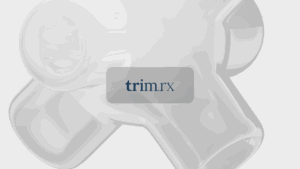How Much Water Should You Drink on a GLP-1?

Water is the essence of life, playing a crucial role in maintaining our health and well-being. Yet, you might be surprised to learn how vital hydration becomes when you’re using GLP-1 medications for weight loss. With the rising popularity of these medications, understanding how much water you should drink while on a GLP-1 is essential not only for your weight loss journey but also for your overall health.
In this blog post, we’ll explore the intricate relationship between hydration and GLP-1 medications, dissecting the reasons why adequate water intake is critical and providing actionable strategies to ensure you stay hydrated. By the end, you will have a clear understanding of the optimal amount of water to consume and practical tips to help you reach your hydration goals.
Introduction
Consider this: many individuals underestimate their daily water intake, often attributing their fatigue, headaches, or digestive issues to other causes. However, when you’re on GLP-1 medications like Semaglutide or Tirzepatide, the stakes are even higher. Why? Because these medications can influence your body’s thirst cues, making it more challenging to recognize when you need to hydrate.
GLP-1 medications have become a game changer for many on their weight loss journeys, but they come with their own set of challenges, particularly concerning hydration. Studies indicate that not consuming enough fluids can exacerbate side effects such as nausea, constipation, and even fatigue. This makes understanding how much water you should drink on a GLP-1 not just a question of thirst but a crucial aspect of your health management.
Throughout this article, we will cover:
- The importance of hydration for those on GLP-1 medications
- Guidelines on how much water to drink
- Practical tips for staying hydrated
- How hydration impacts your weight loss results
So, let’s dive in together and explore how we can optimize our hydration levels for a successful weight loss journey!
Why Hydration is Important When Taking GLP-1 Medications
Staying hydrated is crucial for everyone, but it becomes even more significant when you’re taking GLP-1 medications. Here are some reasons why:
1. Maintaining Digestive Health
Hydration plays a vital role in the digestive process. When you’re taking GLP-1 medications, which can slow down digestion, maintaining adequate hydration helps prevent constipation and promotes smoother digestion. Water aids in the production of digestive juices, which are necessary for breaking down food and absorbing nutrients effectively.
2. Reducing Common Side Effects
Many people on GLP-1 medications report side effects like nausea, vomiting, and constipation. Staying hydrated can help alleviate these symptoms. For instance, dehydration can worsen nausea, making it imperative to consume sufficient fluids. By drinking enough water, you can help your body cope with these side effects more effectively.
3. Flushing Out Toxins
As your body breaks down fat cells during weight loss, it releases stored toxins. Adequate hydration helps your body flush these toxins out efficiently, preventing them from accumulating and potentially slowing down your metabolism.
4. Supporting Energy Levels
Dehydration can lead to fatigue and lightheadedness, which can hinder your motivation and energy levels—key components of a successful weight loss journey. By staying hydrated, you can maintain better energy levels and improve your overall exercise performance.
5. Preventing Water Retention
Ironically, not drinking enough water can lead your body to hold onto excess water, causing bloating and swelling. By maintaining proper hydration, you can help your body regulate its water balance more effectively, reducing unwanted fluid retention.
Summary
Hydration is fundamentally important for digestive health, alleviating side effects, flushing out toxins, supporting energy levels, and preventing water retention. This makes it essential to be mindful of your water intake while on GLP-1 medications.
How Much Water Should You Drink on a GLP-1?
While there are general guidelines for water intake, individual needs can vary significantly based on several factors such as body weight, activity level, and climate. Here’s a breakdown of how to determine your hydration needs:
1. General Recommendations
Most health authorities suggest a daily intake of approximately 91 ounces (about 2.7 liters) for women and 125 ounces (about 3.7 liters) for men. However, these recommendations can change based on specific factors, especially when on GLP-1 medications.
2. Weight-Based Calculation
A common rule of thumb is to drink half your body weight in ounces of water daily. For example, an individual weighing 200 pounds would aim for about 100 ounces of water each day. This method can provide a more personalized hydration goal.
3. Increased Hydration Needs on GLP-1
Due to the appetite-suppressing effects of GLP-1 medications, many users may consume less food, which can reduce their overall water intake from food sources. Therefore, it’s generally recommended that individuals on GLP-1 medications aim for 2-3 liters (67-101 ounces) of water per day.
4. Listen to Your Body
Engaging with your body’s thirst cues is essential. Signs of dehydration can include dark yellow urine, dry mouth, fatigue, and dizziness. If you notice these symptoms, it’s vital to increase your water intake.
Summary
Aim for 2-3 liters of water daily when on GLP-1 medications, adjusting based on your individual needs, weight, and lifestyle. Always listen to your body and respond to its thirst cues.
Practical Tips for Staying Hydrated
Staying hydrated doesn’t have to be a chore! Here are some practical strategies to help you increase your water intake:
1. Infuse Your Water
If plain water feels monotonous, try infusing it with fresh fruits, herbs, or vegetables. Combinations like cucumber and mint or lemon and ginger can make hydration more enjoyable.
2. Carry a Water Bottle
Invest in a reusable water bottle that you can carry with you throughout the day. Having it on hand can serve as a constant reminder to drink more water.
3. Set Reminders
Use your phone or sticky notes as reminders to drink water at regular intervals. Setting alarms can help establish a routine.
4. Include Hydrating Foods
Remember that many fruits and vegetables contain high water content. Incorporating foods like cucumbers, lettuce, oranges, and strawberries can contribute to your overall hydration.
5. Track Your Intake
Consider using hydration tracking apps or journals to monitor your daily water intake. This can help you stay accountable and recognize patterns in your consumption.
6. Hydrating Beverages
In addition to water, consider herbal teas, low-calorie sports drinks, or decaffeinated beverages. Just be mindful of added sugars and caffeine, as these may not contribute effectively to hydration.
Summary
By infusing your water, carrying a bottle, setting reminders, including hydrating foods, tracking your intake, and considering alternative beverages, you can make staying hydrated an enjoyable part of your daily routine.
Conclusion
Incorporating sufficient water intake into your daily routine is essential, especially when you’re on GLP-1 medications. The connection between hydration and weight loss is clear: staying hydrated helps mitigate side effects, maintain digestive health, and support overall well-being.
By aiming for 2-3 liters of water daily, following personalized guidelines, and implementing practical hydration strategies, you can set yourself up for success on your weight loss journey.
At TrimRx, we understand that your journey is unique, and we are here to support you every step of the way. If you’re interested in personalized weight loss solutions, we encourage you to take our free assessment quiz to see if you qualify for our prescription weight loss medications.
FAQ
How can I tell if I’m drinking enough water?
A simple way to check is by observing the color of your urine. Pale yellow indicates good hydration, while dark yellow suggests you may need to drink more.
Can I count other beverages towards my water intake?
While water is the best choice for hydration, other beverages like herbal teas and low-calorie drinks can contribute to your daily intake. However, be cautious with caffeinated or sugary drinks, as they may not be as effective.
What if I’m experiencing nausea while on GLP-1 medications?
If you’re feeling nauseous, staying hydrated is crucial. Sipping on water or ginger tea can help alleviate nausea while ensuring you get enough fluids.
Are there any specific foods I should avoid while taking GLP-1 medications?
While there’s no strict list of foods to avoid, it’s wise to limit high-sugar and high-fat foods that can exacerbate side effects. Focus on a balanced diet rich in lean proteins, fruits, and vegetables.
How can TrimRx help me on my weight loss journey?
At TrimRx, we offer personalized, medically supervised weight loss programs tailored to your individual needs. Our approach combines advanced medical science with compassionate care to help you achieve sustainable results.
By prioritizing hydration and understanding its significance in your weight loss journey, you are taking a vital step towards a healthier, happier you!

Transforming Lives, One Step at a Time
Keep reading
What is GLP-1 and GIP? Exploring Their Roles in Weight Management
Discover what GLP-1 and GIP are, their roles in metabolism and appetite control, and how they can aid your weight loss journey.
What Does the GLP-1 Hormone Do? Understanding Its Role in Metabolism and Weight Management
Discover what the GLP-1 hormone does for your health, from regulating appetite to managing diabetes. Learn more about its benefits today!
Can Type 1 Diabetics Take GLP-1 Agonists Safely?
Wondering if can type 1 diabetics take GLP-1? Discover the benefits, risks, and essential insights on using GLP-1 agonists safely.
What Do GLP-1 Agonists Do? Understanding Their Role in Weight Loss and Diabetes Management
Discover what GLP-1 agonists do in managing diabetes and aiding weight loss. Learn how they work and their benefits in your health journey!
What is GLP-1 Therapy and How Can It Transform Your Weight Loss Journey?
Discover what GLP-1 therapy is and how it can transform your weight loss journey. Learn more and take our free assessment quiz today!
Exploring Foods That Mimic GLP-1: A Guide to Natural Appetite Regulation
Discover what foods mimic GLP-1 and how they can enhance appetite regulation. Boost your health with protein, healthy fats, and fiber-rich options!
Do Compounded GLP-1s Work for Weight Loss? A Comprehensive Exploration
Discover if compounded GLP-1s work for weight loss. Explore benefits, risks, and how they compare to traditional GLP-1 medications.
How Do You Get GLP-1 for Weight Loss and Diabetes Management?
Discover how do you get glp 1 medications safely and effectively. Take our free quiz and start your journey to better health today!
How Do You Microdose GLP-1 for Effective Weight Management?
Discover how do you microdose GLP-1 medications for effective weight loss. Explore benefits, protocols, and get started with our free assessment!







